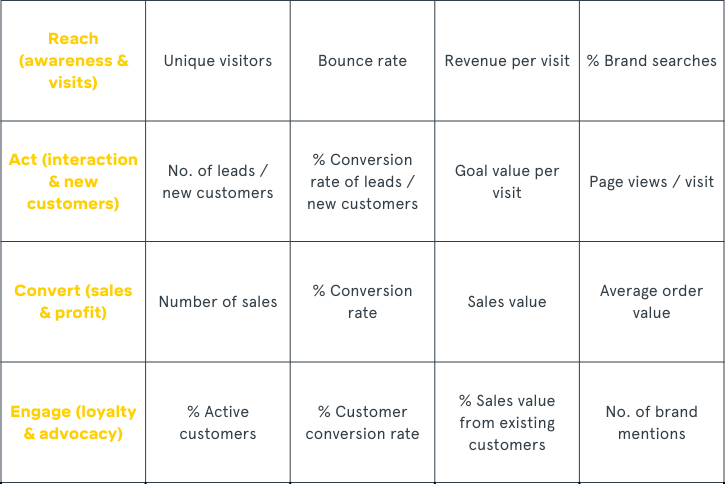eCommerce is among the fastest-growing industries in the world. In 2020 alone, over two billion people purchased goods and services online, with e-sales equating to nearly €4 trillion in retail revenue.
For established brands who may have been reluctant to dip their toe in eCommerce, it’s become somewhat inevitable. And with the COVID-19 pandemic contributing to an astronomic rise in demand for online sales, traditional industries are realising the benefits – and necessity – of online sales.
But while the revenue potential of eCommerce is exciting, it’s important not to lose sight of the challenges and extra work involved in setting up an online store. Thorough planning is needed to take advantage of the benefits on offer, and any venture into online sales must be supported by the appropriate technology and staffing.
Here, we’ll highlight the core things to consider when moving into online sales, as well as the opportunities that you can capitalise on for your business.
The Benefits of eCommerce Defined
Investing in a fully-integrated eCommerce platform, such as Cliqx, is one of the best ways to reap the plentiful benefits of selling online. But what opportunities and advantages can you expect? Find out below.
A Shop Front to the World
eCommerce is a prime jumping-off point from which to attract new customers and enter new markets. Web sales will provide access to a wider audience that makes it easier to target your niche, putting your brand in front of the customers you’re looking for.
Stay Open 24/7, 365 Days a Year
Without the constraints of normal working hours, you can reach customers 24 hours a day, 365 days a year. This not only boosts sales and revenue, but also frees up resources (like staffing), while also allowing your repeat customers to research and buy new products at a time that suits them.
Increase Offline Sales
Did you know that 81% of in-store customers research products online before making a purchase? That means, by not having an eCommerce platform, you’re potentially missing out on a significant offline revenue stream. By presenting information and pricing on your site, you can encourage sales in your physical store.
Save Money & Time
While there is an initial set-up cost to running an online store, an eCommerce site is generally much more affordable to operate than a physical outfit. Add to that the increased revenue and reduced resources associated with web sales, and it’s much easier to generate healthy profits in an online sales environment.
Understand Your Customers
You may have a good understanding of what your customers are looking for, but often this knowledge is based on a very different shopping experience to one that is online you’re your analytics is based on your bricks and mortar sales and sales reps activity . The analytics linked to your eCommerce site can provide a wealth of knowledge on a wider customer-base, so you can tailor your offering to better suit their needs.
Objectives & KPIs
Defining objectives and KPIs for your new eCommerce offering can be difficult. But setting some core benchmarks for success provides clear targets for your team to work towards.
To set realistic objectives, we’d recommend the RACE model. This requires you to set KPIs that relate to four key online sales goals. Take a look at the diagram below to see how this might work in practice.

Technology & System Requirements
To ensure your eCommerce site is a success, you need a few essentials in place to ensure that it’s maintained and serviced optimally. So, before setting your budget, be sure to factor the following into your eCommerce set-up plans.
- URL Name – Your ‘domain name’ costs an annual fee and can affect the performance of your website, so make sure it reflects your business name and products.
- IP Address – A dedicated IP address is the best choice for supporting load times and delivering a consistent experience for users and customers.
- SSL Certificate – A secure sockets layer (SSL) protects customer information (such as credit card information) via encryption. An SSL Certificate incurs a repeat fee, and it’s good practice to display credentials on your website.
- Hosting Provider – The hosting provider hosts your site on a server. Most businesses pay a third-party host rather than maintaining their own server.
- Storage – Your database is arguably the most important part of your eCommerce setup. It contains information like pricing, images, descriptions, and product details. Make sure that your storage capacity is fit for purpose and able to accommodate the required data associated with eCommerce.
Choosing Your Integration Level
Contacting your ERP or business system’s provider is an essential step in deciding whether to adopt a ‘zero’ or ‘high’ level of integration between your eCommerce platform and your management solution. We’ve covered the key considerations for different options below.
- Zero Integration – The cheapest and easiest way of setting up an eCommerce platform is to adopt a zero-integration approach with your business software. This is ideal for businesses that only plan to process a few orders per day, since it’s easy to manage and reconcile web orders manually.
- Mid-Level Integration – Mid-level integration allows some correlation between your eCommerce site and your business management solution. Integration typically includes access to stock and customer information, shared between the two platforms. At this level, you’ll have greater options to allow your customers to self-serve – with full sight of their order histories,etc.
- High-Level Integration – From saving time and money to reducing human errors; high-level integration offers a number of benefits to your eCommerce setup. Automation, inventory management, and order fulfilment are all streamlined by marrying your eCommerce operations closely with your wider management system.
Discover Intact Cliqx – The Bespoke and Flexible eCommerce Solution
Introducing Intact Cliqx, our bespoke eCommerce solution, which is designed to cater for both b2b and b2c web sales platforms. Fully integrating with your existing Intact system, our eCommerce enterprise solution can bring a range of benefits to your online operations, including:
- Saves Time – With Intact Cliqx, you can get your site up and running in a fraction of the time as a comparable third-party solution. And with integration with your business management solution already in place, you can immediately start benefiting from an uptick in web sales revenue.
- Saves Money – With no costly development charges, Intact Cliqx can help you save significant sums on the cost of setting up your first fully integrated eCommerce platform.
- User–Friendly – Having your website and web store in the same system allows for quick changes and improvements, making life easier for both you and your customers. You’ll benefit from intuitive functionality, while users enjoy a seamless and fluid experience.
- Short Order Fulfilment Cycle – With orders flowing in real-time from the Cliqx eCommerce platform to your central management system, this reduces the time it takes to pick, pack and ship customer orders – optimising the fulfilment and aftercare cycle.
- Streamline Stock Synchronisation – Intact Cliqx provides integration between your website and back-office accounts system, enabling the seamless management of stock items. Your web store provides an accurate picture of availability and is automatically updated in real-time.
- Improved Customer Service – By keeping customers up to date on their orders, you can increase confidence in your online store. Discover buying habits, promote key items, or feature new products, all while making strategic decisions that can drive revenue and growth.
Ready to start your eCommerce journey? Whether you need to update your business management solution or feel that a fully-integrated eCommerce solution is the right fit for your brand, Intact’s Pro-Serve consultants are here to help every step of the way.
Learn more about Intact, book a demo or speak to our trusted experts >




